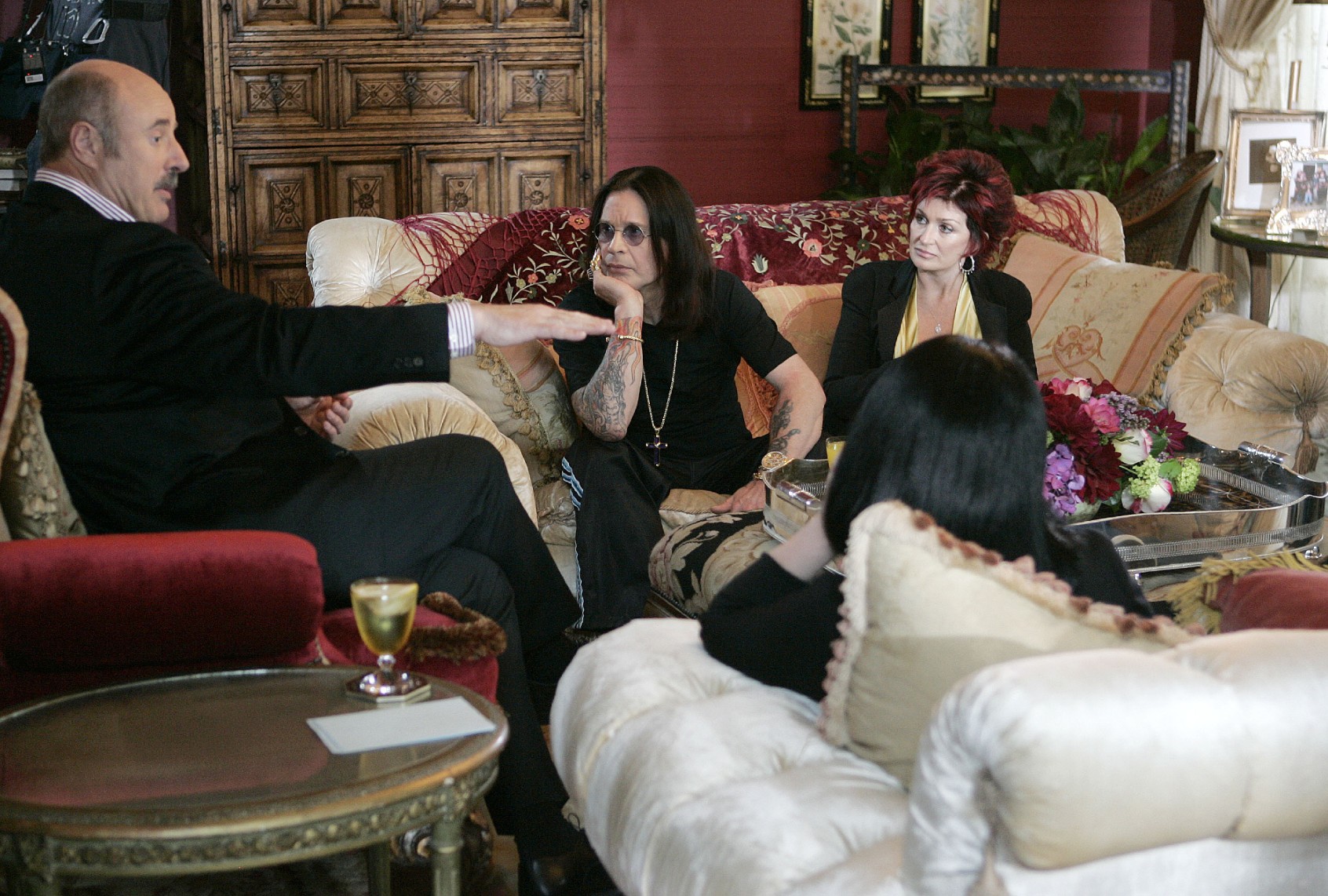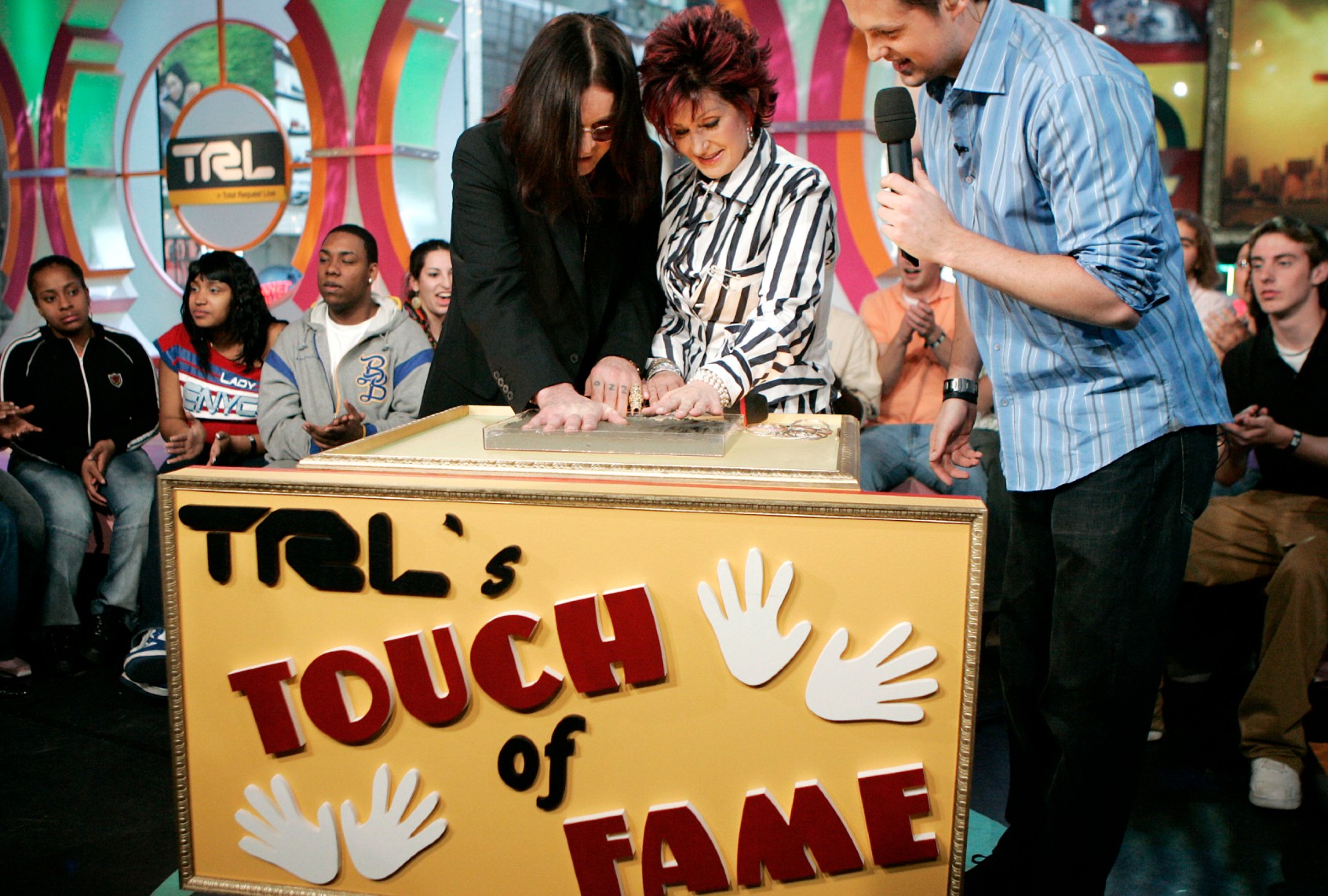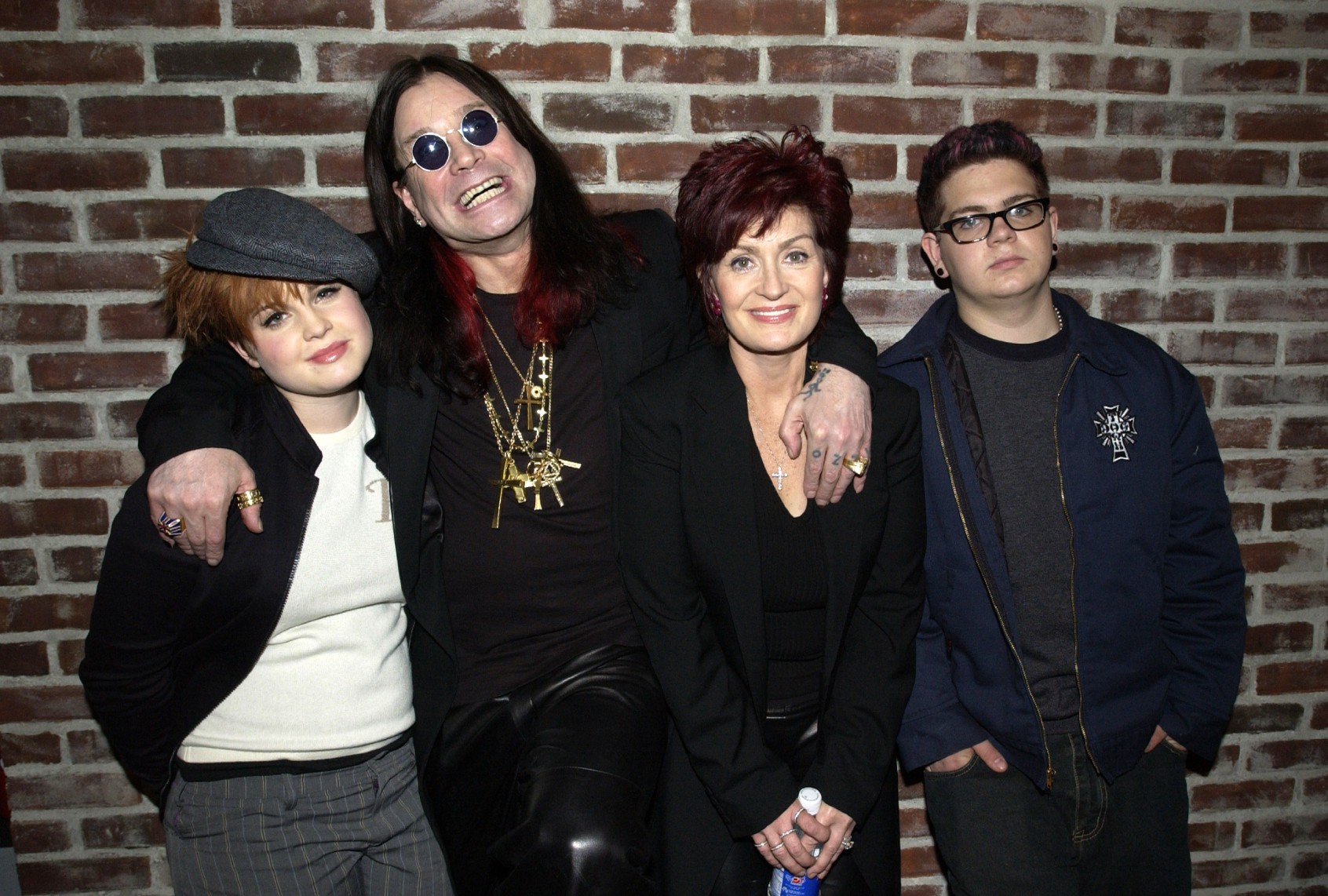Ages before anyone was keeping up with the Kardashians, MTV spun Ozzy Osbourne and his family into a modern version of “The Adventures of Ozzie and Harriet.” The channel had already ushered in the modern reality TV age with “The Real World,” one of the first unscripted dramas to transform normal people into celebrities. Bringing “The Osbournes” to our screens simply reversed the formula.
“The Osbournes” chopped down the privacy hedge between celebrities and the public — or convincingly pretended to, since episodes were highly edited to amplify the comedy.
Ozzy Osbourne, who died Tuesday at the age of 76, was an undisputed rock god whose preternatural wail shook the gates of hell. Familiarity with his rock catalog wasn’t necessary because his reputation preceded him. Biting the head off a bat during a concert earned national headlines. Years before that, Black Sabbath’s former frontman cemented himself in the popular imagination as a demon made flesh.
Offstage, he was a doddering, stammering dad shuffling around rooms bustling with yapping tiny dogs urinating everywhere. His children, Kelly and Jack, vacillated between showering him with affection and berating him for not catering to their whims. Wife Sharon played the taskmaster, keeping everything in line. (Oldest daughter Aimee refused to participate.)
“An American Family” may have inspired the unscripted genre by introducing TV audiences to The Louds in the early 1970s, but it took an actual loud British family to transform the audience’s relationship with celebrity and vice versa.

(J. Merritt/FilmMagic/Getty Images) “The Osbournes” Season 3 – Therapy With Doctor Phil
Today, the idea of one famous family’s daily existence seizing a nation’s attention purely by coming into our living rooms may seem positively ancient. But that was how it was in 2002, before the ubiquity of cell phone cameras and viral social media fame.
“The Osbournes” chopped down the privacy hedge between celebrities and the public — or convincingly pretended to, since episodes were highly edited to amplify the comedy. The show’s theme was a cocktail culture cover of “Crazy Train”; incidental music transitioning one scene to the next was intentionally reminiscent of 1950s sitcoms. That lent a velveteen innocence to the jovial wreckage “The Osbournes” created and navigated almost constantly, although there were many times when what we saw clashed against the lighthearted sonic wallpaper.
Ozzie and Harriet Nelson kept their dirty laundry to themselves. Ozzy and Sharon allowed the cameras to roll as they hurled a ham hock into a neighbor’s yard and a log through his window. Later came Jack and Ozzy’s father and son fishing trip, highlighted by dad hooking a bird.
Cameras captured Jack stabbing boxes with a bayonet and followed along as Kelly spiraled out on drugs and checked into rehab, only to leave early when she realized the place wasn’t as accommodating as a spa.
By traveling along with all that — and Sharon’s cancer recovery, and Ozzy’s recuperation from an ATV accident — the attention economy shifted.
Ozzie and Harriet Nelson kept their dirty laundry to themselves. Ozzy and Sharon allowed the cameras to roll as they hurled a ham hock into a neighbor’s yard and a log through his window.
Suddenly, every marginally famous person was popping up on TV, with 2003 bringing us “The Surreal Life” and its house of has-beens, along with “The Simple Life,” featuring Paris Hilton and Nicole Richie torturing farm folk.
“The Surreal Life” mushed Brigitte Nielsen and Flavor Flav together in its third season, a bizarre coupling that inspired “Strange Love” and a whopping assortment of spinoffs and related shows. Following “The Osbournes,” KISS bassist Gene Simmons and wrestling star Hulk Hogan toplined their own family reality series. Later, we were collectively besieged by “Ice-T Loves Coco.”
Paris Hilton’s reality track record wasn’t especially consistent, but Kim Kardashian appears to have learned from her friend’s missed promotional opportunities. Like Hilton, Kardashian also debuted to the broader public by way of a sex tape scandal. But Paris’ mother, Kathy, didn’t parlay her daughter’s 15 minutes into 14 seasons of reality TV, as Kris Jenner did for Kim.
I could go on, but it suffices to say that “The Osbournes” sits near the root system of celebreality’s Tree of Life, for richer or poorer. By itself, and provided we didn’t think too deeply about it, it was a hoot that pulled in close to 8 million viewers per episode at its height.
Moreover, it removed fandom as a prerequisite to entry. Osbourne hadn’t exactly faded into obscurity; his Ozzfest tours placed him and Black Sabbath in front of live audiences annually for much of the ‘90s and well into the aughts. There’s a reason MTV dropped its cameras into his aquarium as opposed to, say, someone from Poison, although Bret Michaels had his moment in this orgy courtesy of “Rock of Love,” for which he has one Mr. Flav to thank.
“The Osbournes” sits near the root system of celebreality’s Tree of Life, for richer or poorer.
But by sanitizing Ozzy and Sharon Osbourne, “The Osbournes” established the architecture for the celebrity soft sell. The bumbling rocker dad is gentle, laughable even, and you very much believed his younger version was capable of snorting ants, one of those legends he alternatively denied and confirmed throughout his career.
One might not have been aware that Dark Father Knows Best previously knocked out Sharon’s front teeth during an altercation. In another incident in 1989, he blacked out in a drug haze and nearly strangled her, landing him an attempted murder charge. Sharon Osbourne’s no dove either, having assaulted a show promoter and built a reputation for publicly insulting people who cross her.
This and other trespasses aren’t dealbreakers by today’s standards. Look at all the crimes confirmed and alleged that another reality TV character, President Donald Trump, is accused of committing, and the too-sizable percentage of Americans willing to forgive him even when he insults their intelligence.
Not that anyone needs reminding, but “The Apprentice” took a bankrupt businessman and molded him into a competent real estate titan character so plausible that millions of people refuse to believe it was fiction. At least Ozzy had real talent and a willingness to depart from his old Prince of Darkness persona to take on a more broadly palatable one that he didn’t exploit to break the world.
We need your help to stay independent
But even if one balks at connecting one end of the conspiracy wall yarn to “The Osbournes” and the other to Trump, the show proved how easily the right reality framing can shine up a star’s tarnish and help them win the public’s trust.
Hogan’s career had pretty much lain fallow until VH1 handed him “Hogan Knows Best” and placed him in front of a generation of viewers who followed him into MAGA land. (We will never know whether billionaire technocrat Peter Thiel would have financed the lawsuit that ended up killing Gawker if Hogan’s profile hadn’t been revitalized by TV.)
If “The Osbournes” deserves credit for gassing up the celebrity side of the reality genre, then it also merits some blame for bringing us this administration’s made-for-TV cabinet, a cast that includes “Real World: Boston” alumnus Sean Duffy as our transportation secretary and former WWE CEO Linda McMahon, now playing the role of Secretary of Education.
We might even cite its part in making “telling it like it is” into a virtue, especially if that lack of a filter requires a network censor.

(Peter Kramer/Getty Images) Ozzy Osbourne and Sharon Osbourne make an appearance on MTV’s Total Request Live on March 21, 2005 in New York City.
Sharon Osbourne’s frequently bleeped candor on “The Osbournes” was hilarious, remember? It went on to earn her judging gigs on “The X Factor” and “America’s Got Talent,” among other shows. But it also brought her co-hosting gig on “The Talk” to an abrupt end when she did a racism.
Kelly leveraged the fame “The Osbournes” granted her to become the second most famous “Fashion Police” co-host next to Joan Rivers. On the flipside, she also made a cameo in “Sharknado 2: The Second One.” Jack, meanwhile, has mainly stuck to presenting in his post-show life, including on a paranormal investigation show that co-starred his parents.
Start your day with essential news from Salon.
Sign up for our free morning newsletter, Crash Course.
Appreciations examining Ozzy Osbourne’s impact focus more closely on his music than his reality show character, and rightly so. Osbourne leaves behind a metal legacy few will match in terms of artistic prolificness and dedication to showmanship. His final show happened just three weeks before he died.
Still, regarding “The Osbournes” as a standalone feat makes us realize and even appreciate the moments that stripped away the black eyeliner and devilish costuming to show Ozzy for something closer to who he truly was. What we saw was a mess, sure, but also a father capable of tenderness and honest self-appraisal who was effortlessly funny.
If we were to assign his TV father an epitaph, he could do a lot worse than the unvarnished speech that closes the first season. His words reveal a man who knows the world sees him differently from the truth of the flawed, disheveled guy staring back at him from the mirror every morning. That bloke was what MTV’s cameras captured for the most part.
“I’m not proud of having a poor education. I’m not proud of being dyslexic and having attention deficit disorder,” he says, pausing to request some sweetener to stir into this tea.
He continues, “I’m not proud of being a drug addict, alcoholic. I’m not proud about biting the head off a bat. I’m not proud of a lot of things. But I’m a real guy with real feelings, and I suppose that kind of scares me sometimes, you know?”
Then he sums up his life with the precision of a great sitcom dad. “To be Ozzy Osbourne . . . It could be worse. I could be Sting.”
Read more
about The Osbournes


